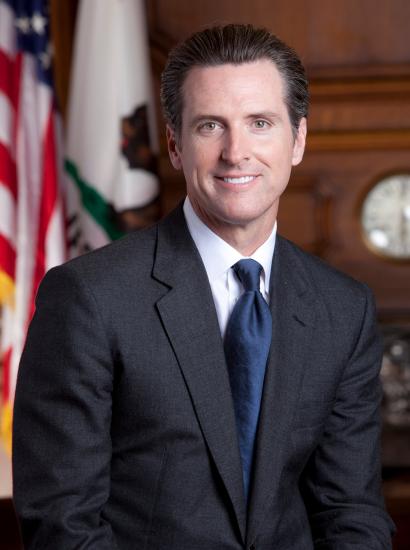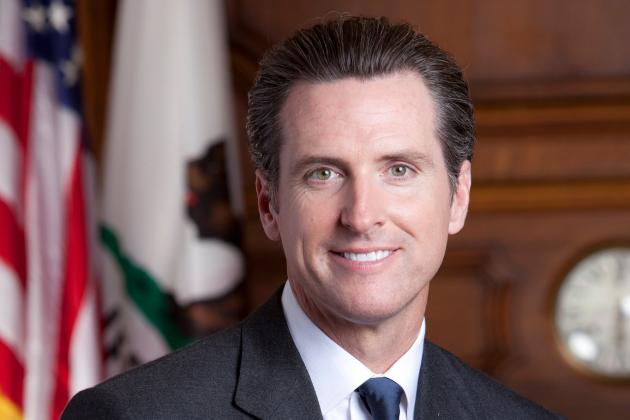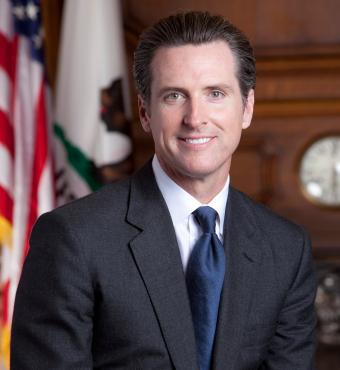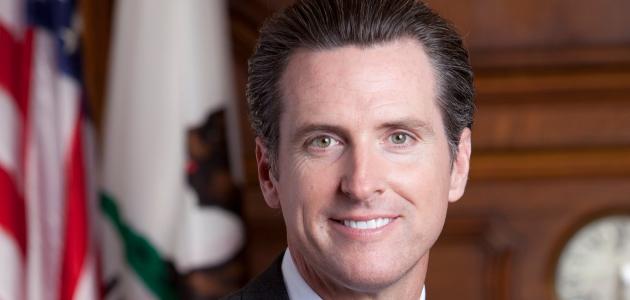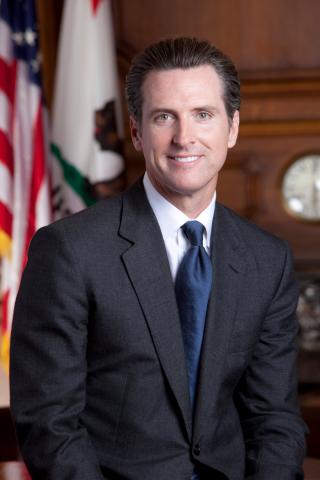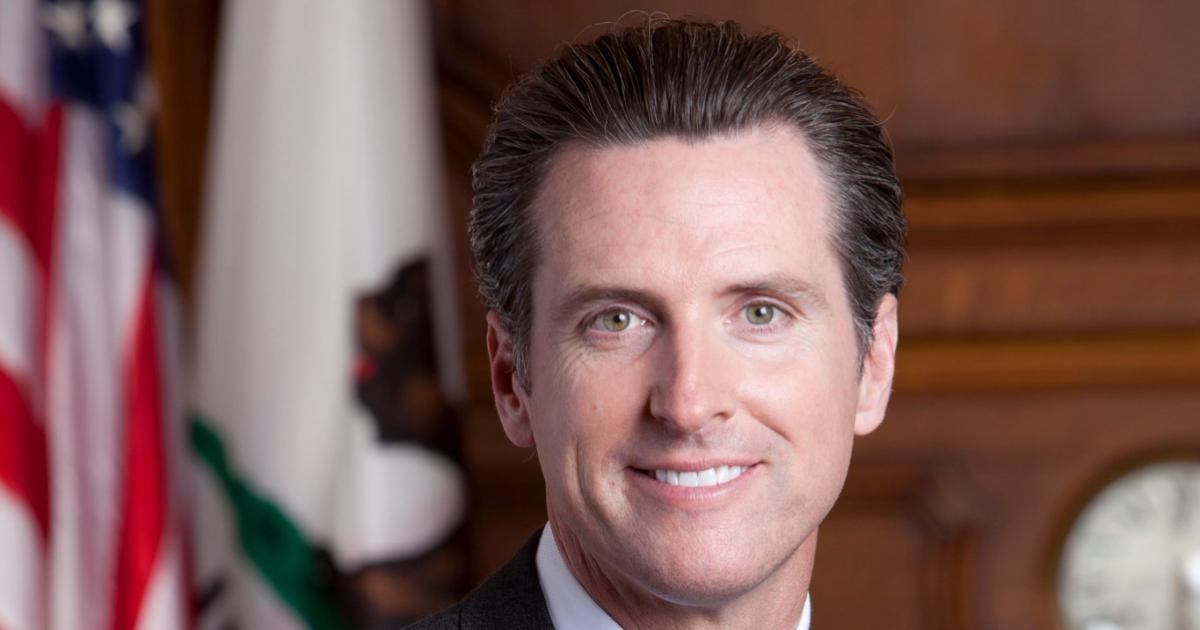History shows that California governor Gavin Newsom took office on the seventh day of 2019 under clear skies in Sacramento—in itself an unusual occurrence, as winter weather in California’s state capital has been known to literally rain on a new governor’s parade.
What also stood out about Newsom taking the reins as California’s fortieth governor: the festive atmosphere.
Given the scope of his victory and a strong economy, the new governor and his fellow Democrats had arguably the biggest celebration since 1999, when Democrat Gray Davis’s inauguration, after sixteen years of Republican governors, prompted three days of partisan jubilation.
Indeed, throughout Newsom’s first year in office, the new governor seemed California’s fortunate son. The Golden State’s economy continued to flourish, with predictions of California’s growth outpacing the nation’s. The stronger the economy, the more money flowing into the state’s coffers—and, of course, more money flowing out of Sacramento come the new fiscal year, more than enough to expand full-day kindergarten across the Golden State and boost enrollment at public universities and college campuses.
Newsom even had the good fortune of the political lineup in Washington. Then president Donald Trump played the part of a convenient foil to the governor, as the two engaged in oft-times puerile tweets that pleased their respective political bases. Even Newsom’s greatest in-state threat to greater political glory in Washington—Kamala Harris—didn’t enjoy the same good fortune as her presidential campaign came to abrupt end a full two months before voters went to the polls in Iowa and New Hampshire.
And then misfortune struck California’s governor (repeatedly) like a two-by-four between the eyes.
First, there was the matter of a global pandemic that sent California’s economy into a tailspin as lockdowns and changed rules of commerce disrupted lives and ruined businesses.
Second, the governor found his competency under question.
California’s state Employment Development Department had to explain why it managed to pay out billions in phony COVID-19 unemployment claims to the likes of organized crime actors in China and Russia. Newsom’s preferred responses to challenges and crises—forming blue-ribbon task forces—seemed more like exercises in futility and furtiveness.
Adding to those woes: California’s sloppy rollout of COVID vaccination, which raised unsettling questions of which demographic deserved to be at the front of the line—and why a state so steeped in technology advancements could have such lousy tech support (as well as providing, as some have noted, further evidence of California’s chronic rich-poor divide).
Poor personal judgment contributed to Newsom’s woes—most notably, an unwise decision to attend a group dinner at Napa’s uber-pricy French Laundry restaurant (a bad situation that Newsom made worse not being up-front about COVID protocol violations later caught on film).
Finally, adding insult to injury: Kamala Harris went from a has-been presidential candidate to next in line for the presidency. Even if Newsom has a remarkable turnaround—overcoming his current troubles, earning re-election in 2022 and pivoting to a White House run should President Biden decide not to seek a second term—he’ll have to figure a way around Harris and her institutional advantage (Hubert Humphrey, Walter Mondale, Al Gore, and Biden all were sitting or former vice presidents who claimed the Democratic nomination).
As a result of these struggles, both imposed and self-generated, Newsom has begun his third year in office in political peril. By next week and a Saint Patrick’s Day deadline, organizers of a recall effort to remove the governor from office may or may not deliver the 1.5 million certified voter signatures necessary to trigger a special election later this year (that formula is based on 12 percent of the sum vote in 2018’s governor’s election).
The last time California staged such a vote was in 2003, when Gray Davis was shown the door in favor of Arnold Schwarzenegger (that gubernatorial recall election occurring exactly 15 years and two months prior to Newsom taking the same oath as Schwarzenegger and Davis).
Collectively, what this represents is the California governor at not just one but two crossroads in 2021: a recall election that, were it to occur, would either terminate or rejuvenate his administration; and the question of whether he can regain the public’s trust (per this January Berkeley IGS Poll, Newsom’s and the state government’s handling of vaccine distributions received a mere 22 percent approval, while Newsom’s handling of jobs and the economy in California came in at 23 percent).
In this edition of Eureka, we asked several experts on California policy and politics to look at ways that state government has failed its citizens and what reforms the governor and his fellow officeholders should consider to regain the public’s confidence.
Contributors include:
- Dr. Jay Bhattacharya and Dr. Martin Kulldorff, Stanford University Professors of Medicine, explain why California’s needs a COVID strategy other than lockdown – pointing to Florida’s opposite approach of allowing human activity while curbing the virus.
- Lanhee J. Chen, the Hoover Institution’s David and Diane Steffy Fellow in American Public Policy Studies, highlights the accountability and review of vital state programs.
- David Crane, a lecturer in the Public Policy program at Stanford University and president of Govern for California (as well as a special advisor to former governor Arnold Schwarzenegger), offers a history lesson as to how both major political parties lost their way on pension obligations.
- Michael Trujillo, a veteran Democratic strategist and former Los Angeles city commissioner, calls out the state’s vaccine response for allowing the politically well connected to “climb the ladder” ahead of the less advantaged.
- Lorraine Salazar, owner of Fresno-based Sal’s Mexican Restaurants, calls on the state to allow businesses to further open up to their clientele.
We hope you enjoy this latest installment of Eureka—and that it gets you thinking about where California stands and whether America’s most populous state is moving in the right direction.
Happy reading!









